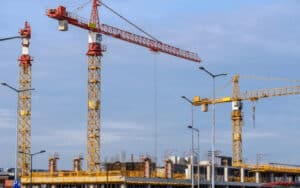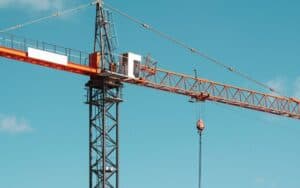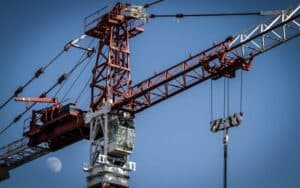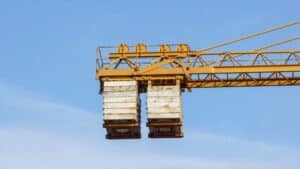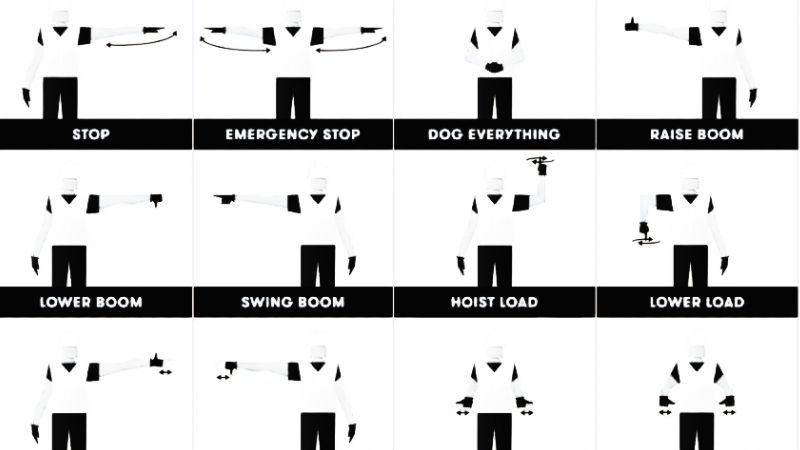
Crane hand signals stand as the universal language that bridges the gap between crane operators and the ground crew, enabling safe and efficient operations in environments where verbal communication may be impossible due to distance, noise, or other barriers.
When a crane operator sits high above in their cab, their visibility is often limited. This is where crane signal persons become essential components of any successful lifting operation. The hand signals they use represent a standardized system that allows them to communicate with the crane operator clearly and precisely.
OSHA 1926.1419 provides the regulatory framework for these standardized signals, ensuring consistency across the industry.
Under OSHA 1926.1428, only qualified individuals can serve as signal persons. These qualifications include:
- Knowledge of the standard hand signals for the specific type of crane being operated
- Competence in using these signals
- Understanding of crane operations and limitations
- Knowledge of when it’s appropriate to use hand signals versus other forms of communication
- Ability to communicate effectively with the crane operator
Basic Principles of Effective Crane Hand Signals
Clarity and Visibility
For hand signals to be effective, they must be clear and visible to the crane operator. This means:
- Signals should be made with deliberate, distinct movements
- The signal person should position themselves where the operator can see them clearly
- Signals should be made with the entire arm, not just the hand, to increase visibility from a distance
- High-contrast clothing should be worn to make the signal person stand out
To avoid confusion, OSHA regulations specify that the crane operator must respond to signals from only one person at a time. The exception to this rule is the emergency stop signal, which the operator must obey no matter who gives it.
Standard Hand Signals for Crane Operations
Basic Directional Signals
Stop – Emergency Stop
Execution: Extend arm out to the side with the palm down, then move your arm back and forth horizontally.
What It Communicates: This signal indicates an immediate halt to all crane operations. The operator must react immediately when seeing this signal. This is one of the most critical signals, and OSHA does allow the emergency stop signal from anyone, not just the designated signal person.
The emergency stop signal might be necessary when unexpected hazards appear in the path of a load, when the load becomes unstable, or when a person enters the danger zone. Fast and reliable response to this signal can prevent serious accidents.
Stop – Normal Operations
Execution: Extend one arm to the side and raise the forearm vertically with the palm facing forward.
What It Communicates: This signals a normal, controlled stop of the current operation.
Dog Everything
Execution: Clasp hands in front of the body.
What It Communicates: This signal indicates to the operator that all movements should be stopped and the brake engaged. “Dog everything” essentially means “secure everything in its current position.”
Crane Travel Signals
Travel/Move the Crane
Execution: Arm extended forward, hand open and slightly raised, making a pushing motion in the direction of travel.
What It Communicates: This indicates that the entire crane should move in the direction shown.
Travel – One Track
Execution: Indicate the track to be locked by raising the fist on that side. Indicate direction of travel of the unlocked track by rotating the other fist in front of the body in small circles.
What It Communicates: This signal is used when you want only one track of a crawler crane to move while the other remains stationary, effectively allowing the crane to pivot or turn.
Travel – Both Tracks
Execution: Use both fists in front of the body making small circles to indicate both tracks should move. The direction of the circles indicates forward or backward movement.
What It Communicates: This signals that both tracks should move simultaneously, either forward or backward depending on the direction of the circular motion.
Main Hoist Signals

Cranes are equipped with various hoisting mechanisms, with the main hoist usually having a higher load rating than auxiliary hoists. The main hoist is the primary lifting mechanism and requires precise control.
Hoist/Raise the Load
Execution: With forearm vertical and forefinger pointing up, move hand in small horizontal circles.
What It Communicates: This signals the operator to raise the load using the main hoist. The circular motion indicates the direction the cable drum should turn.
Lower the Load
Execution: With arm extended downward, forefinger pointing down, move hand in small horizontal circles.
What It Communicates: This indicates that the load should be lowered using the main hoist. Again, the circular motion mimics the movement of the cable drum.
Use Main Hoist
Execution: Tap fist on head, then use regular hoist signals.
What It Communicates: This specifically indicates that the main hoist should be used for the subsequent operation. This is particularly important on cranes with multiple hoists of different load ratings.
Use Whipline (Auxiliary Hoist)

Execution: Tap elbow with one hand, then use regular hoist signals.
What It Communicates: This signals that the auxiliary hoist or whipline should be used instead of the main hoist. The whipline typically has a lower load rating but may offer better positioning options in certain situations.
Boom Signals
The boom is the arm of the crane that extends outward and supports the load. Precise control of the boom is essential for positioning loads accurately and safely.
Raise the Boom
Execution: Arm extended, thumb pointing upwards, flex fingers in and out as long as load movement is desired.
What It Communicates: This signals the operator to raise the boom, which changes the angle of the boom relative to the ground, increasing its height.
Lower the Boom
Execution: Arm extended, thumb pointing downwards, flex fingers in and out as long as load movement is desired.
What It Communicates: This indicates that the boom should be lowered, decreasing its angle relative to the ground.
Raise the Boom and Lower the Load
Execution: Arm extended, thumb pointing upwards, simultaneously make a lowering motion with the other hand.
What It Communicates: This combination signal indicates two simultaneous actions: raising the boom while lowering the load.
Lower the Boom and Raise the Load
Execution: Arm extended, thumb pointing downwards, simultaneously make a raising motion with the other hand.
What It Communicates: This signals that the boom should be lowered while simultaneously raising the load.
Extend the Boom (Telescopic Booms)
Execution: Both fists in front of the body with thumbs pointing outward.
What It Communicates: This indicates that a telescopic boom should be extended outward, increasing its length.
Retract the Boom (Telescopic Booms)
Execution: Both fists in front of the body with thumbs pointing toward each other.
What It Communicates: This signals that a telescopic boom should be retracted, decreasing its length.
Extend the Boom (One Hand Signal)
Execution: One fist in front of the body with thumb pointing outward and the other finger closed towards the palm.
What It Communicates: An alternative signal for extending telescopic booms, useful when one hand needs to be free for stability or other purposes.
Retract the Boom (One Hand Signal)
Execution: One fist in front of the body with thumb pointing toward the body and the fingers closed towards the palm.
What It Communicates: An alternative signal for retracting telescopic booms.
Specialized Signals for Different Crane Types
Mobile Crane Specific Signals
Mobile cranes, including those with telescopic booms and hydraulic systems, have specific operational characteristics that require dedicated signals.
Raise the Boom and Lower the Load
Execution: Arm extended, thumb pointing upwards, simultaneously make a lowering motion with the other hand.
What It Communicates: This combination signal is particularly important for mobile cranes where coordinated boom and load movements are common.
Lower the Boom and Raise the Load
Execution: Arm extended, thumb pointing downwards, simultaneously make a raising motion with the other hand.
What It Communicates: This signals the opposite coordinated movement, lowering the boom while raising the load.
Travel/Move the Crane (Mobile Crane)
Execution: Arm extended forward, hand open and slightly raised, making a pushing motion in the direction of travel.
What It Communicates: This indicates the direction of travel for the entire mobile crane unit.
For over two decades, IHURMO has stood at the forefront of the construction machinery industry, delivering high-quality, durable, and cost-effective equipment to clients across 100+ countries. Specializing in tower cranes, construction hoists, suspended platforms, scissor lifts, and mast climbing work platforms, we empower builders worldwide to achieve efficiency, safety, and precision in their projects.
Backed by CE, EAC, and ISO 9001 certifications, our products meet stringent international standards. Our 800+ skilled workers and advanced welding robots ensure every piece of machinery is built for longevity and performance. If you are interested in our products, don’t hesitate to contact us.


